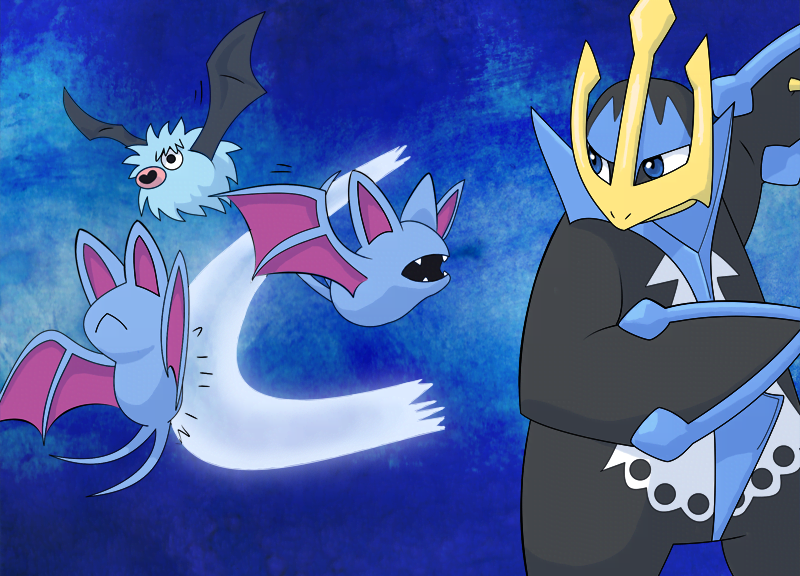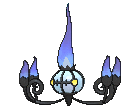What Makes a Pokémon Strong?
Learn the basics behind the stats of your Pokémon and how to improve them!
“True strength is delicate.” – Louise Berliawsky Nevelson
I have a level 100 Gengar. You have a level 100 Gengar. Whose is stronger? “Mine has Hypur Beem, and that’s the strongest move in the game herp derp” you say. I say that unless you actually were paying any attention to what you were doing when you trained it, mine likely has higher stats. “Wut, but they’re the same level herp derp” or “Lol stats don’t matter because I hit u with Hypur Beem and it be super effecteve herp derp” you say? It all depends on careful planning and preparation. Also Hyper Beam is not the strongest move in the game and Gengar is immune to it, but who cares?
In this article, I shall discuss what makes a given Pokémon stronger than others of its species (and of other species) and why it matters, as well as a rough guide to obtaining and training stronger Pokémon. This here is the obligatory “Very Technical And Probably A Little Funny Article Ahead” warning, now let’s try to understand the power that’s inside, so that you can prepare your army of six before you go forth to do battle.
Side note: I will NOT be discussing differences that have no impact in battle, such as whether a Pokémon is Shiny or not (although in Gen 2, Shininess [and gender] DID have an impact on battles).
Assorted Musings On Magical Sprinting Icebergs (What are Stats?)
Nintendo has long billed that each individual Pokémon is different, even within a species. While this isn’t exactly true, there is a huge amount of variance within a single type of Pokémon. For example, Garchomp is said in its Pokédex entries to be able to fly (despite being a ground type) at supersonic speeds. But while some Garchomp might be faster than the fastest Zapdos (of equal levels), others that choose to take up its slightly slower Mega form might be as slow as a speeding Avalugg (still equal level). Please take this moment to picture a half-ton iceberg with legs running at Mach 1. Now get that picture out of your head, as it isn’t all that realistic (Mega Garchomp would need to be as slow as you could make him prior to battle, and Avalugg as fast as possible, and even then they still tie). This is all determined by the Speed stat and the variables that go into calculating this.
Let’s start with the basics. Each Pokémon has six “statistics”, which were (and will continue to be) shortened to stats. These are the major numbers that impact a Pokémon’s strength in combat. They are viewable from the first page in the Pokémon’s summary page. They increase with level, which is what makes a higher-level Pokémon stronger then a lower-level one. For the remainder of this article, all Pokémon will be assumed to be at their maximum level (100) because the majority of competitive battles occur at this level (unless you are at an official tournament). Here are each of the stats in the order they are traditionally listed, what they do, and some Pokémon with strong numbers in the given stat:
 Hit Points (HP) – Your Pokémon’s health, or how much damage your Pokémon can sustain. Pokémon with high HP: Blissey, Chansey, Wobbuffet.
Hit Points (HP) – Your Pokémon’s health, or how much damage your Pokémon can sustain. Pokémon with high HP: Blissey, Chansey, Wobbuffet.
 Attack (Atk) – Your Pokémon’s raw strength, or how much physical damage your Pokémon can dish out. Pokémon with high Attack: Rampardos, Slaking, Haxorus.
Attack (Atk) – Your Pokémon’s raw strength, or how much physical damage your Pokémon can dish out. Pokémon with high Attack: Rampardos, Slaking, Haxorus.
 Defense (Def) – Your Pokémon’s resilience, or how well it shrugs off physical damage. Pokémon with high Defense: Shuckle, Steelix, Avalugg.
Defense (Def) – Your Pokémon’s resilience, or how well it shrugs off physical damage. Pokémon with high Defense: Shuckle, Steelix, Avalugg.
Special Attack (SpA/SAtk/SpAtk) – Your Pokémon’s special strength, or how much special damage it can dish out. Pokémon with high SpAtk: Chandelure, Porygon-Z, Volcarona.
Special Defense (SpD/SDef/SpDef) – Your Pokémon’s resilience to Special attacks, or how well it shrugs off special damage. Pokémon with high SpDef: Shuckle, Florges, Goodra.
Speed (Spd, Spe) – How fast your Pokémon moves. Pokémon with high Speed: Ninjask, Accelgor, Electrode
When listing out every stat (except sometimes HP) at once, the abbreviations are usually omitted and it is written in the order above separated by slashes, although usually it is the variables that affect the stats that are listed rather than the actual stats (we’ll get there when we get there). Every one of these stats matters a lot in battle. Speed determines turn order. Generally, the Pokémon with a higher Speed gets to attack before a Pokémon with lower Speed (exceptions: Priority attacks like Quick Attack, Trick Room is live). The four in the middle all get plugged into the formula that determines how much damage an attack does. That formula looks something like…
![]()
Note that the number is then rounded down. This number is how much damage an attack does. Most of the other variables are self-explanatory and don’t matter here because they are all relative and therefore don’t show the power of a Pokémon. The Modifier variable has its own formula that accounts for everything otherwise missing from the formula, including the Same Type Attack Bonus (STAB), type effectiveness, items, and a randomly generated number. This has nothing to do with stats however, so on we go.
The Attack and Defense variables are the ones we care about for now. Each attacking move is either classified as physical or special. If the attack is physical, the relevant stats are the attacker’s Attack and the defending Pokémon’s Defense. If the attack is Special, the relevant stats are the attacker’s SpAtk and the defender’s SpDef (Exception: Psyshock, Psystrike, and Secret Sword check the attacker’s SpAtk and the defender’s Defense). Whatever damage comes out of that formula is subtracted from the defender’s HP stat, but you probably figured that out by now. So what does all of this mean? It means we get to do math, which is always fun.
Let’s say you have a heroic Empoleon with a stat line of 208/190/283/301/156 with 309 HP who is attempting to strike down a vile Talonflame with a Choice Band (which increases its attack by 1.5) with a stat line of 257/163/140/150/279 and 269 HP. Due to its higher Speed, the villain gets the first strike. The oversized bird charges at the mighty penguin, cloaking itself in its fiery and incredibly ugly fire to unleash the annoyingly strong Flare Blitz attack (which has a base power of 120). Assuming the Modifier variable works out to 2.25 (max damage roll and STAB, plus the Choice Band), you plug all the numbers into the damage formula and get…
Damage = (((2 * 100 + 10) / 250) * ((257 * 1.5) / 190) * 120 + 2) * 2.25 = (0.84 * 0.858… * 120 + 2) * 2.25 = 309.7768… –> 309.
Comparing this damage (309) to Empoleon’s HP results in the disheartening fall of our beloved champion. However, if our hero had a slight change made to it resulting in a stat line of 187/212/283/301/156, Empoleon would majestically survive the horrid blow. Talonflame, of course, manages to get himself injured while attacking our hero like the good animated villain he is, losing some HP due to Flare Blitz’s recoil. At this point, it is Empoleon’s turn to strike back. A quick Scald (80 base power, assuming max damage means a modifier of 2.25 due to the type advantage and STAB) results in…
Damage = (((2 * 100 +10) / 250) * (283/150) * 80 + 2) * 2.25 = (0.84 * 1.88… * 80 +2) * 2.25 = 289.764 –> 289
…which enough for justice to be served, regardless of Flare Blitz recoil. Just a small change in Empoleon’s stats resulted in a complete reversal of the results of the battle, plus the bird got what it deserved. But what could have caused this change in stats? Why is Talonflame so obnoxiously powerful? What is the meaning of life? All these questions and more answered below.
The meaning of life is 42, let’s get that out of the way now.
Top Quality 3rd Grade Algebra, etc. (Calculating Stats)

That formula determines stats that aren’t HP. That is all. To get HP, use that formula, remove nature, change the 5 to a 10, and add Level to the final result. At level 100 (which is what we are using, remember?), the level in the numerator cancels out the entire denominator due to assorted fraction rules, which results in the formula looking far less confusing:
OtherStat = (2 * Base + IV + (EV / 4) + 5) * Nature
See, no more weird multi-variable fractions or whatever. Like I said, 3rd grade algebra. This is why level 100 is so convenient. However, there are still a good number of confusing variables. Here is what they mean:
Back to Bases (Base Stats)
I’d love to save the most important for last, but everything else scales off this.

Each species of Pokémon has a number associated with each stat. They can all be found here. A Pokémon’s BST (Base Stat Total) is the sum of it’s base stats. Generally, more evolved Pokémon have higher BSTs, and Legendary Pokémon having more than most evolved Pokémon. The Pokémon with the highest BST before any Mega/Primal stuff happens is our lord and saviour Arceus, with a BST of 720 (120 in each). The bottom of the range is Sunkern, with a whopping 180 BST (30 per stat). Mythicals (e.g. Mew) usually balance out at 600, a tier shared with most pseudo-legends like Garchomp. Trio-Legends (e.g. Articuno, Zapdos, Moltres) usually show up around the 580 range, with cover legends (Lugia, Ho-Oh) near 680. Mega Evolving usually adds 100 to the BST, which is divided among whatever stats our almighty overlords (Game Freak) decided that the Pokémon needed to become stupidly overpowered. The point is that they are directly added to the stat, and are usually the biggest number in the formula.
Logically, if your Pokémon shows up relatively high in the charts in a specific base stat, its final stats will be higher. Thus, you want to focus on using that stat. For example, Gallade has a 110 base Attack compared with a 65 SpAtk (the same as Kirlia’s). If you are running Special attacks on Gallade you are doing something wrong. The only major exception to this is to give a Pokémon access to a coverage move. Many Garchomp choose to run Fire Blast to kill Ferrothorn, despite being a physical-focused Pokémon.
Smashing Hordes of Zubat For Fun and Profit (EVs)

Next, we have the easiest variable to control. Effort Values, or EVs, are how the way you train a Pokémon affects its stats. In this case, “the way you train a Pokémon” translates roughly to “which species of Pokémon did you beat up the most”. Each stat has an effort value between 0 and 252 inclusive, and the maximum sum of all their EVs is 510.
A couple more usages of the MAGIC OF ALGEBRA tells you that at level 100, 4 EVs in a stat raises it by 1 point (ignoring Nature). Divide 252 by 4, and you figure out that EVs can raise each stat by 63 points, a huge number. Divide 510 by 252, and the result of 2 remainder 6 means that at most you can maximize the EVs in 2 stats and put the remaining 4 in another stat for a whopping 1 point (which matters far more often than you’d think). That’s right – 2 EVs go unused; effectively you only have 508 EVs to play with.
Once you are attuned to the competitive meta, you can start specializing your EVs to barely withstand certain attacks or barely get a specific KO (Example: I EV’d my Ludicolo set to withstand a 200 SpAtk EV’d Mega Salamence’s Hyper Voice in a Double Battle, while out-speeding any max Speed Smeargle that are holding a Choice Scarf in Rain). For new players, I’d stick to mostly 252/252/4 splits, usually with 252 in the offensive stat of your choice, 252 in Speed, and 4 in the defensive stat of your choice. Heck, I’ve been playing competitively for a long time and 252/252/4 splits are still present on most of my Pokémon.
The reason EVs are so easily manipulated is that unlike everything else on this list, the EVs are based entirely on how the Pokémon was trained and therefore can be changed after the Pokémon is generated. When defeated, a Pokémon typically grants anyone who receives experience from the fight 1-3 EVs in its highest stat. For example, Zubat grants 1 Speed EV. So if you want your Pokémon to be super fast, beat up a ton of Zubats. There are other ways to EV train as well. I’ll save the rest of this bit for later and move on.
Why Your In-Game Team Sucks Competitively (IVs)
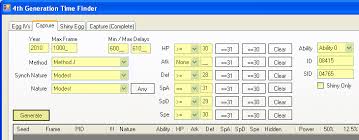
Individual Values, or IVs, are a TOP SECRET set of numbers. Each Pokémon has an IV value for each stat that is determined when the Pokémon is generated. These values range from 0 to 31 inclusive, and each one raises a Level 100 Pokémon’s stat by 1 point (ignoring nature). Simply put, a Level 100 Piplup with a 0 Attack IV will have 31 less Attack than if that value was 31.
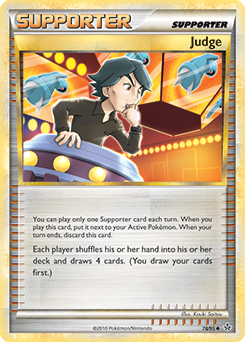
Our almighty overlords have decreed that IVs should never be visible in-game. Thankfully, they did allow the Judge who hides out in the Poké Centers of Kiloude City and the Battle Resort to give an incredibly vague overview of a Pokémon’s IVs. He will give you a range for the sum of the IVs, then tell you the highest IV(s) and give you a range for that, then tell you if you had any IVs of zero. You can find the full range of things he says here, but if he says that the highest stat “can’t be beat”, you have a 31 stat. When he says all 6 stats before mentioning that they can’t be beat, you have a perfect Pokémon. However, if you know all the other variables in the stat formula, you can use the MAGIC OF ALGEBRA to get a formula for IVs, which looks like this:
IV = (((OtherStat / Nature) – 5) * (100 / Level)) – (EV / 4) – (2 * Base)
Again, the formula can be adjusted slightly to get HP. It is worth pointing out that if the Pokémon’s level is too low, there are actually a range of possible IVs from each stat. Using this formula will produce the lowest possible value because of how rounding works after you algebra things (a 5.2123 is actually a 6 because the starting value was rounded down). If you have this problem, just level the thing up (make sure to count the EVs gained while leveling though).
As a side note, your IVs also determine the type (and power in gens 2-5) of the move Hidden Power. Other than losing the power calculation (which was confusing), the formula hasn’t changed since gen three, meaning a Fairy Type Hidden Power (and also Normal, but who cares) is not available and that Fairy is the only type that a certain overrated ninja frog thing can never be. Technically, Hidden Power calculation takes the least significant bit of each IV, throws them into a formula, and maths it out. Understanding it that way takes knowledge of binary coding and stuff. However, I have simplified the process for convenience in this article. Here is a step-by-step guide to finding your Pokémon’s Hidden Power Type:
 We are going to be adding a bunch of numbers. Either get out your calculator, pencil, or brain and follow along (I recommend option 1). Start this number at 0. For convenience, I’m assigning it the letter x.
We are going to be adding a bunch of numbers. Either get out your calculator, pencil, or brain and follow along (I recommend option 1). Start this number at 0. For convenience, I’m assigning it the letter x.- Find your Pokémon’s IVs. You need the exact ones, so go find them somehow.
- If the HP IV is odd (i.e. doesn’t divide evenly by 2), add 1 to .x
- If the Attack IV is odd, add 2 to x.
- If the Defense IV is odd, add 4 to x.
- If the SpAtk IV is odd, add 8 to x (are you seeing a pattern yet?).
- If the SpDef IV is odd, add 16 to x.
- If the Speed IV is odd, add 32 to x.
- Now that all IVs are accounted for, we need to assign it to a type. Given there are only 16 types that matter (Fairy and Normal don’t), we need to get the number we have to a value between 0 and 15 inclusive. To do this, multiply that number by 15, then divide the product by 63. Round the quotient down, and you have your magic number.
- Compare this number to the chart to the right (courtesy of Bulbapedia).
- Ask yourself why you used these instructions rather than asking the guy in the second house from the left in the top row of Fortree City, and why you are still reading an article written by someone who didn’t tell you this at the start.
As an example, Ice is the most common Hidden Power type competitively. Given we want as many variables as possible to be odd (i.e. 31), we want to reduce as few stats as possible to make the final product equal 11. You could do lots of math here, but I’ll just spoil the answer and say you lower the Speed stat. This is why I usually refrain from running HP Ice if there is a viable alternative, as I will always be slower than non-HP Ice variants. I mean, there are a couple other combinations that result in HP Ice, but those each lower two stats. And who would want to give up a point in two other stats just to save one in speed?
Assorted Musings on Nature’s Power (Natures)
This will be much less complicated then the previous section. A Pokémon is, upon generation, assigned a Nature. These describe a Pokémon’s social personality, and range from Modest to Adamant to Timid to Jolly (and to many new trainers, these are the only four that matter). In case it wasn’t obvious from its inclusion in the stat segment, these impact the Pokémon’s stats. HP is exempt from nature shenanigans, leaving five stats remaining. Each Nature raises one stat by 10% and lowers another by 10%, resulting in the total number of Nature options equal to 52, which is to say 25. Here are those options with the stats they raise and lower:

The Natures on the bottom row (Hardy, Docile, Serious, Bashful, and Quirky) raise and lower the same stat. In this case, the raise and lower camps have a duel that ends with both sides being wiped out, having no impact on stats and becoming utterly useless competitively (hence why the artist assigned those natures to useless and/or meme-y Pokémon). You want to make sure you know what Nature you want to use before you start trying to get a new Pokémon.
Nature is hugely important due to the fact that it is the only multiplier in the Level 100 formula. The Nature value in said formula is equal to 1.1 for a boosting Nature, 0.9 for a hindering Nature, and 1 for a neutral Nature. If a Pokémon has 400 in a stat otherwise, the stat goes up by 40. This is very often what wins and loses games based on speed and needs to be kept in mind at all times.
Assorted Calculations Relating to Penguins (Examples)
Here is a test on how well you actually read the previous 3323 words.
- Assuming a Level 100 with a 31 IV in Defense, and a Modest nature, find the Defense EV of the second spread of Empoleon above.
- Assuming a Level 100 with an Adamant nature and 252 EVs in Attack, find the Attack IV of the Talonflame above
- Why is Empoleon so much more awesome than Talonflame?
YAY MULTIVARIABLE ALGEBRA! Let’s go.
Example 1:
Recall that our heroic Empoleon from the calcs in the previous section had a total Defense of 212. This means that the final value is 212. The Modest nature doesn’t impact Defense, so the nature variable is 1. The remaining variable that we have information on is the base stat, which is 88. Plug this into the formula, do some algebra, and you get this:
212 = (2 * 88 + 31 + (EV / 4) + 5) * 1, (EV / 4) = 0; EV = 0
Example 2:
Talone’s attack was 257 and its base is 81. The Adamant nature boosts Attack, so the Nature variable is 1.1. Fill in the EV blank, algebra it a bit, and you get this:
257 = (2 * 81 + IV * (252 / 4) + 5) * 1.1, IV = (257 / 1.1) – 162 – 63 – 5 = 3.636364
In every other formula on this page, this would result in a 3 due to rounding. However, because it is really the final stat that was rounded, this result rounds up to 4.
Example 3:
In this example, Empoleon is significantly better trained. Attack is Talonflame’s most used stat, and it ends up with an awful Attack IV of 4. Luckily the trainer leveled Talonflame up by beating up Poochyena rather than something else, otherwise it could barely hold its weight on offense. Meanwhile, Empoleon had near-perfect IVs, a helpful nature, and a good EV spread. Combined with Talon’s slightly lower BST (499 to Empoleon’s 530), Empoleon had significantly higher stats because of how awfully Talon was trained. Now try to guess what I changed between the two Empoleon spreads above.
Patience, Love, and Nocturnal Mammals, As They Relate Becoming The Very Best (How Do?)
So now that you know what goes into a stat, how do you make your Pokémon generally better? Well, it is a long and confusing process. You need to control 3-5 variables (EVs, IVs, Nature, plus a couple more depending on your set), two of which are unchangeable. Here are some ways to control each in the order you should do them:
Nature
There are two ways to control what Nature your Pokémon get, and both of them require you to have a Pokémon of the Nature in question. The first involves finding a Pokémon with the Synchronize Ability and the correct Nature. Synchronize has a TOP SECRET BONUS EFFECT that, if the Pokémon with it leads your party, causes wild Pokémon encountered to have the same nature as the Synchronize Pokémon 50% of the time (100% in the case of legendaries and gift Pokémon). Lastly, if a Pokémon in the Daycare is holding an Everstone and produces an Egg, the hatched Pokémon will have the same Nature as that parent. Method 1 is the primary way of acquiring them to start with, while method 2 is how they are passed on during the breeding process. Speaking of which…
Individual Values

This is the hardest one to deal with. Generally, the DexNav can sometimes show you a Pokémon’s “potential”, which is equal to the number of perfect IVs it has. The only other way to control IVs is through breeding again. A hatched Pokémon will inherit 3 IVs combined from its parents, or 5 if one is holding a Destiny Knot. Thus, the better the parents, the better the child might be. A technique used by many trainers is to replace the parent(s) when a better child appears. Here is a more in-depth breeding guide for those of you who care.
Of course, none of this matters if they make IVs trainable in Gen 7, which defeats the point of IVs. Game Freak, you confuse me sometimes. Why do I buy this company’s games again?
Effort Values
Each Pokémon, when defeated, gives a number of EVs in their highest base stat to any Pokémon that received experience from defeating it (including through EXP share). Zubat grants 1 Speed EV upon its foes. Thus, if you want to maximize your Speed, you find a cave and beat up 252 Zubats.
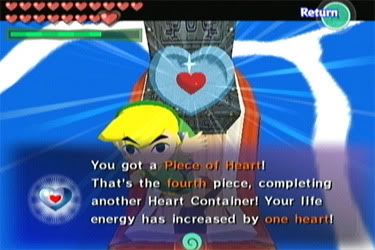
If that seems inefficient to you, then you think like Gen 6 Game Freak (not to be confused with Gen 3 Game Freak). There are plenty of ways to other ways to get EVs and ways to increase the amount of EVs received from a battle. Super Training increases EVs, as do Protein and the like.
However, the most efficient method of EV training is to train off hordes. If you have enough BP to afford all the Power items (which makes battles that increase the appropriate EV grant 4 extra EVs) go buy them, otherwise pick up a Macho Brace (doubles EVs) from the Winstrate house (Route 111 in ORAS). Equip your boosting item, flip that EXP share to On, go to a location that is good for training the stat in question (there is a list here) and either use a Honey or the move Sweet Scent (the latter is recommended) to summon an angry Horde. Smash them to a pulp with the Area of Effect (AoE) move of your choice (Surf works just fine), and you gain a huge number of EVs in that stat, up to 25 from a Power item. Repeat until you have reached the desired number. Profit.
Super Training in generation 6 games (X, Y, Omega Ruby and Alpha Sapphire) increases EVs, as do those Training Bags. Items like HP Up and Protein add 10 EVs to their relevant stat, but only until the Pokémon has 100 EVs in that stat. Furthermore, you can reset a Pokémon’s EVs back to zero with a Reset Bag, or decrease them with a berry (e.g. Hondew Berry, which decreases Sp. Atk. EVs).
The last note on EV training is Pokérus. Pokérus is a viral disease that randomly effects Pokémon caught in the wild or hatched from an egg at a rate over five times lower than Shininess (~1/21845). It is represented on the summary page as an a pink box with the word ‘PKRS’ on it where status conditions are normally represented until it is cured. Pokérus cures itself after 1-4 days in the player’s party, at which point it is represented by a cute pink smiley face.
A Pokémon that has Pokérus or has been cured of Pokérus gains double EVs from battles, meaning a Horde with a Power Item and Pokérus grants 50 EVs in a stat, decreasing the number of battles needed to cap a stat to 6. What makes this relevant is that once Pokérus is obtained, it can be passed to other Pokémon in the player’s party by the afflicted Pokémon simply completing some battles. It can even be traded to pass Pokérus onto another player’s Pokémon. If you want to start EV training Pokémon, it is probably worth asking someone to trade you a Pokémon that has it. Heck, if no one else will do it, ask me, I have plenty of carriers to go around. Just make sure you put at least one Pokémon with Pokérus in your PC box by midnight, as keeping it in your party overnight may cause it to be cured (even when you’re not playing!).
In conclusion, your in-game team probably (sadly) sucks for competitive, stats are important, getting strong Pokémon takes an era and a half, and none of this matters when you get flinched and crit to death or you forgot to run at least 3 Talonflame checks. That’s all the time I have for today. Make sure to direct questions, comments, and complaints to the comments below. Oh, and go read my other article like this if you haven’t about controlling the luck factor in battles!
Edited by bobandbill and gimmepie.
Cover image by Sylphiel.
